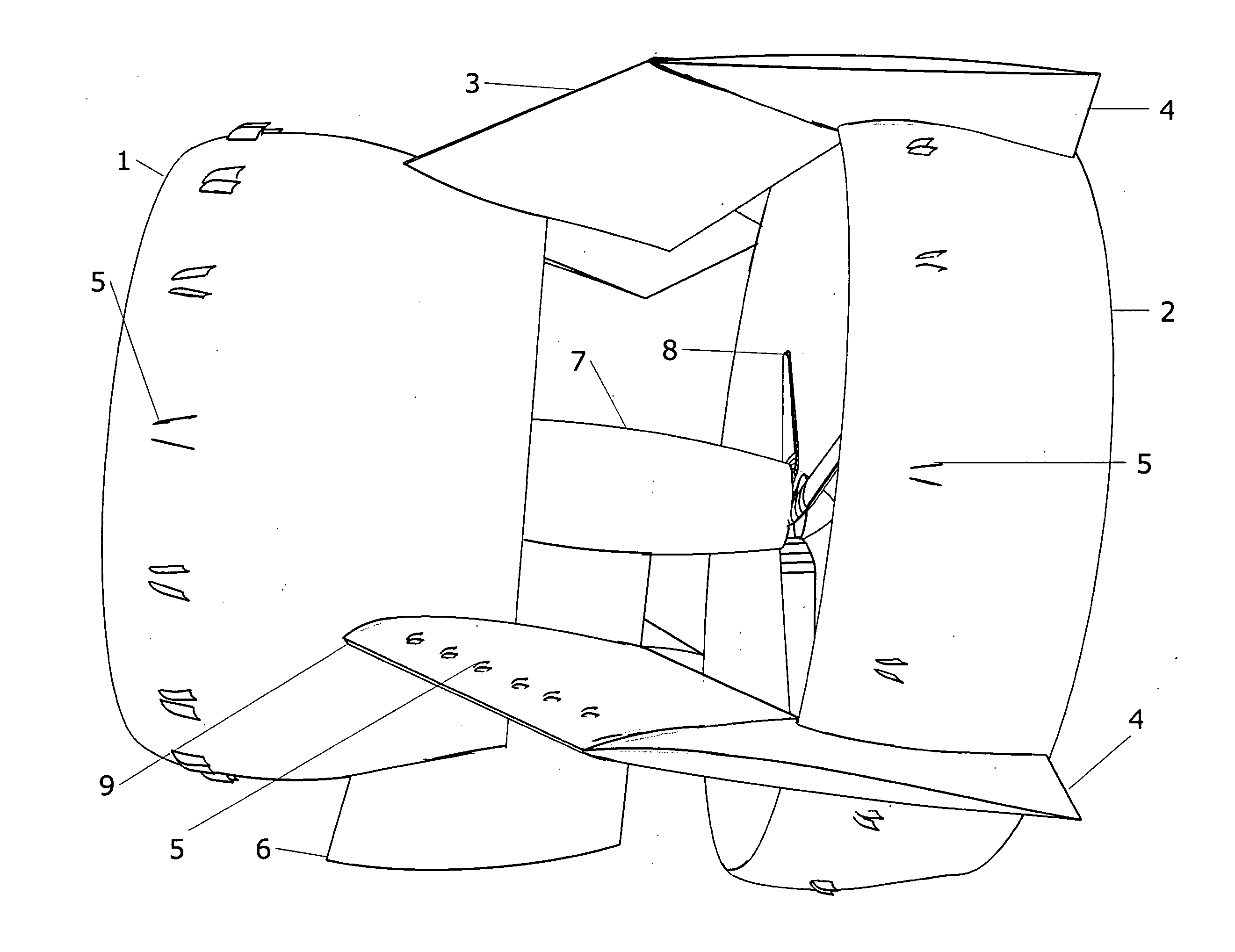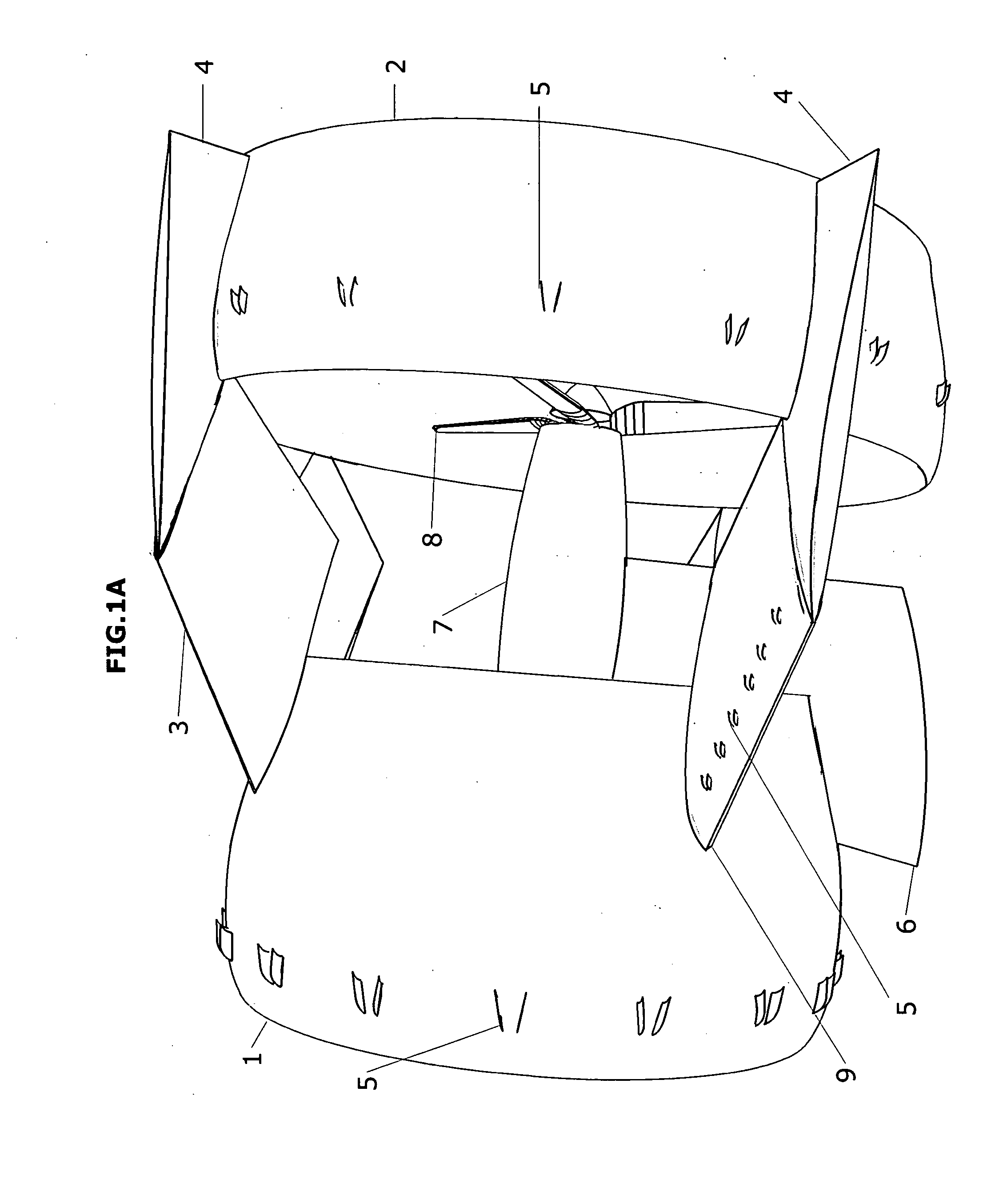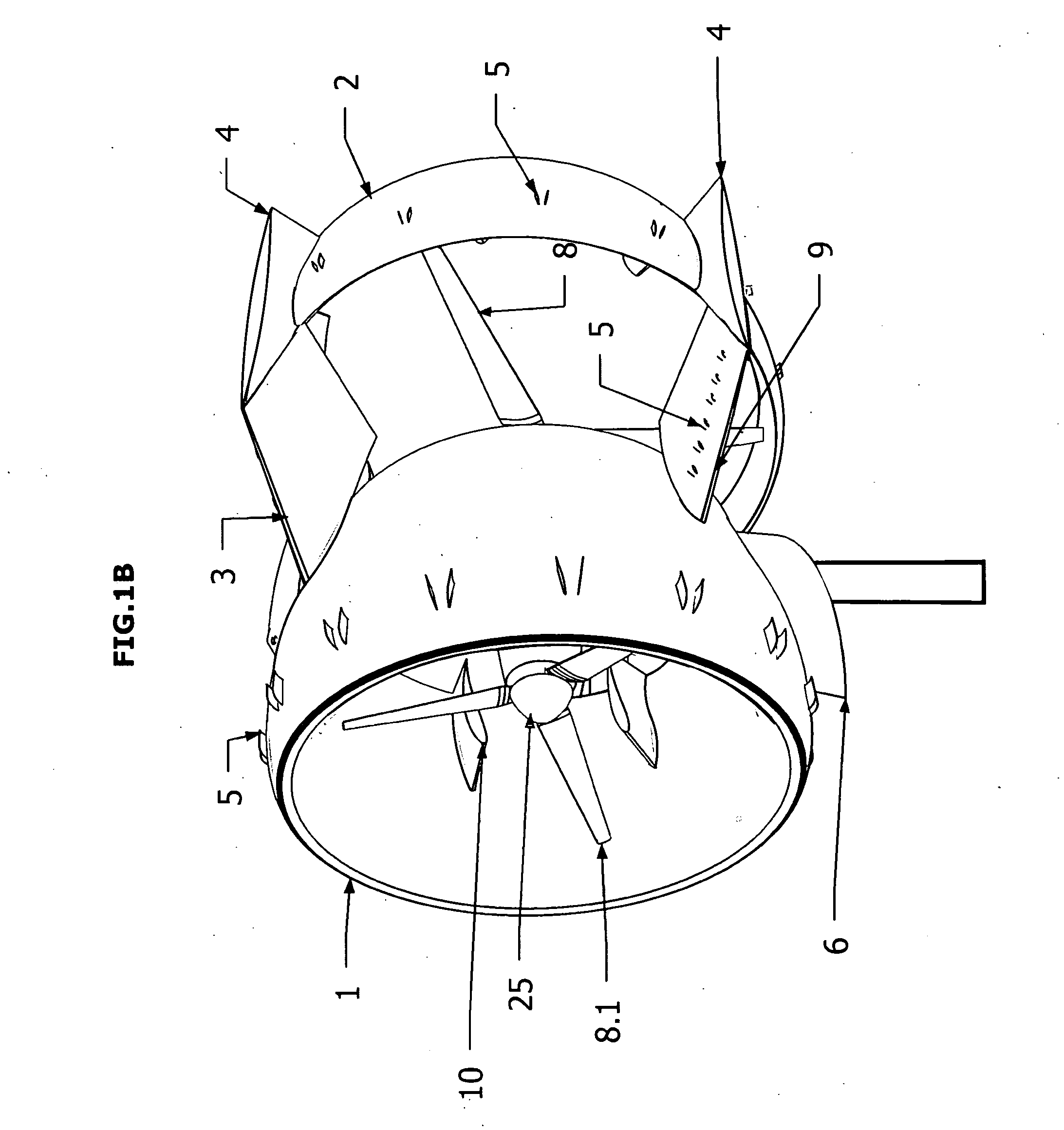Adaptive Control Ducted Compound Wind Turbine
a compound wind turbine and adaptive control technology, which is applied in the direction of combination engines, electric generator control, machines/engines, etc., can solve the problems of large exit to inlet (or nozzle to exit) diffuser ratio, adversely affecting rotor/propeller performance, and harming efficiency
- Summary
- Abstract
- Description
- Claims
- Application Information
AI Technical Summary
Problems solved by technology
Method used
Image
Examples
Embodiment Construction
[0020]Embodiments of the present invention provide for a compound, dual annulus / annular wing, counter rotating propeller blades, dual rotor / turbine system, consisting of variable and / or fixed vanes on the inner walls, horizontal and vertical stabilizers connecting the forward and after ducts, and vortex generators for flow attachment along the inner / outer duct walls circumferentially arranged for efficient harvesting of wind energy. The performance of rotors / propellers / fans within a shroud or duct improve turbine efficiency by minimizing losses at the rotor / propeller tip, provided suitable clearance between the propeller tip and shroud are met in these axial flow systems.
[0021]Ducted propellers / ducted fans provide high static thrust per rotor diameter than an un-ducted propeller. Un-ducted, mono-propeller HAWT turbines deflect away a significant portion of the incoming free-stream resulting in lower turbine efficiency and power production and vortex shedding also creates turbulence ...
PUM
 Login to View More
Login to View More Abstract
Description
Claims
Application Information
 Login to View More
Login to View More - R&D
- Intellectual Property
- Life Sciences
- Materials
- Tech Scout
- Unparalleled Data Quality
- Higher Quality Content
- 60% Fewer Hallucinations
Browse by: Latest US Patents, China's latest patents, Technical Efficacy Thesaurus, Application Domain, Technology Topic, Popular Technical Reports.
© 2025 PatSnap. All rights reserved.Legal|Privacy policy|Modern Slavery Act Transparency Statement|Sitemap|About US| Contact US: help@patsnap.com



